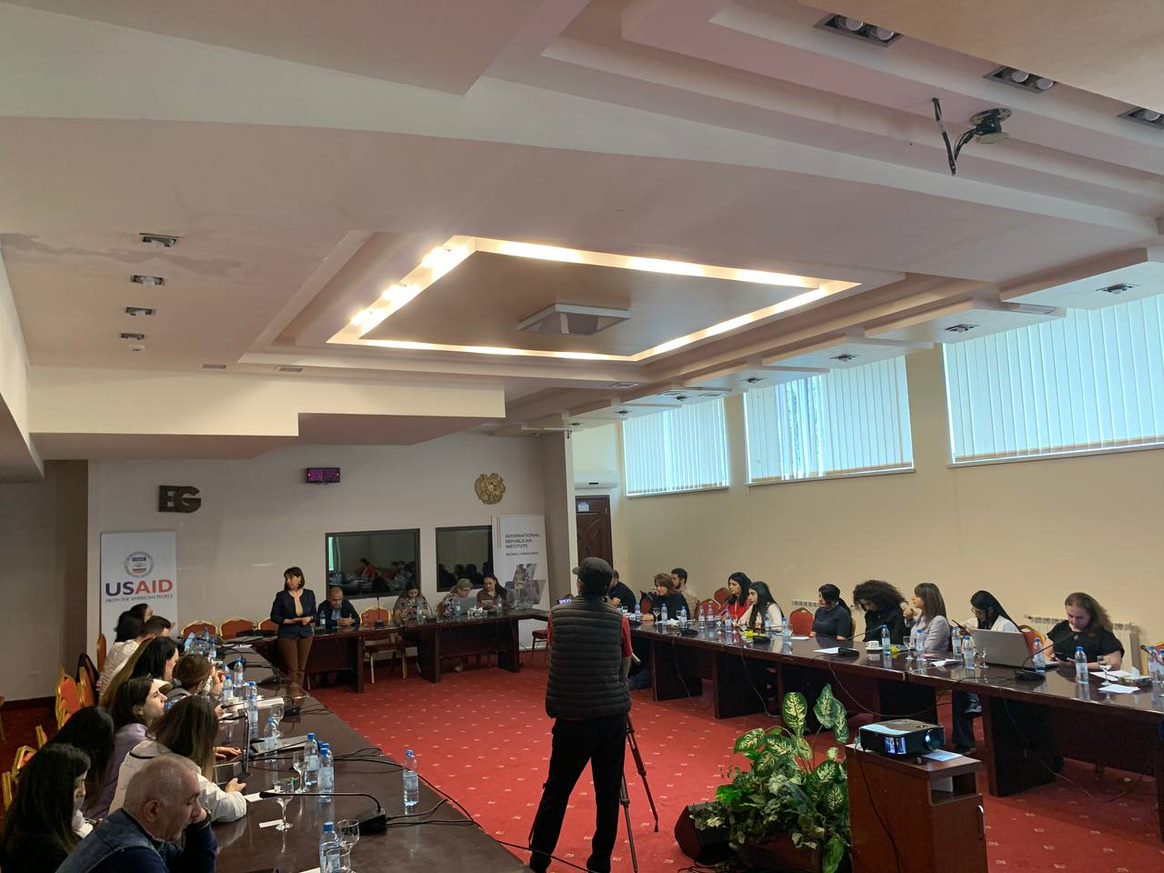A magnitude 7 earthquake. Several people hurt, it isn’t yet clear how many. Worse, though, the country’s only nuclear power plant lies close to the earthquake’s epicenter. Let’s call this Country A. So far, though, the reports are encouraging, no damage reported to the plant’s containment structure. But unverified reports from a neighboring country, Country B, with a border only 16 kilometers away, are potentially more alarming. And the nuclear power plant is only 37 kilometers away from Country A’s capital city of over one million people.
Twenty-four high-level Armenian government spokespeople are sequestered in a mountain resort outside Yerevan figuring out how to cope with this potential crisis in Country A. It is part of an elaborate simulation designed to test their skills, their ability to work together, and their grasp of proper government procedure.
This is helping me get new skills to deal with crisis situations, to learn flexibility, to be less stressed in stressful environments, at first I was sort of worried about everything, but now it is okay.
Lana Asatryan – Armenian State Supervision Service
Lana Asatryan, who works, in real life, for the Armenian State Supervision Service said, “This is helping me get new skills to deal with crisis situations, to learn flexibility, to be less stressed in stressful environments, at first I was sort of worried about everything, but now it is okay.”
Meanwhile, in fictional Country B, media outlets are reporting higher than normal radiation levels along the border and have asked the International Atomic Energy Agency to send a team of inspectors to the nuclear plant. Country B has expressed concerns about the plant’s safety since a devastating earthquake decades ago forced the plant to shut down.
Of course, the whole point of the simulation is learning how to manage a catastrophe, since some form of crisis afflicts every public relations expert at some point in their career. This crisis simulation is the culmination of a training program which included 18 sessions on PR skills ranging from workshops on verifying sources, social media analytics, media strategy, and mock interviews.
“This is the end of three months of training, meetings, doing joint projects, and the whole point is to institutionalize the spokesperson’s role,” said Anna Naghdalyan, a Program Officer at the International Republican Institute in Armenia. “They need to be professional, trained, formalized, we’re thinking they need a school to professionalize the role of government spokespeople.”
The concept and work of spokespeople is still relatively new in Armenia. Some government spokespeople mix their official and personal social feeds, posting the latest on, say, public health news along with pictures of their cat. And others, when they leave the government, take their social media accounts with them, including official contacts and information. Part of the purpose of IRI’s training program is raise the profile and impact of government spokespeople—to make them trusted voices, trusted by both the public and by their bosses as advisors.
“I’ve learned new tools that helped me in my daily work, better writing, I’ve met with many experts, some I liked and some I didn’t, and how to speak in front of an audience, how to help my boss speak in front of an audience, write press releases, manage Facebook official pages,” said Tatevit Zoryan, the head of public relations for the government’s Market and Surveillance Inspection Body.
An important ancillary benefit is connection. This group of spokespeople can now share best practices, new ideas, and gripes about challenges. “We’ve gotten to know each other, we are friends, it helps us work effectively across ministries, I have all my colleagues’ phone numbers,” Zoryan said.
Meanwhile, in the simulation, the IAEA has arrived in Country A and discovered a crack in a water tank in an inside layer of the nuclear plant. The government spokespeople call a hasty press conference to assure people the plant is safe, to urge them not to panic, and to downplay the extent of the earthquake damage—cracks in some houses and 29 people taken to local hospitals. They’re trying to stave off panic, but the press conference is rambling, somewhat fact-free, and lacks a cohesive message.
Artak Nersisyan, who is the head of the Operative Information Division at the Ministry of Foreign Affairs, takes a leading role. “Foreign Ministry spokespeople are attuned to international best practices because we’re in close contact with colleagues from different countries, but this kind of training is very much needed for the other ministries. Sometimes the leadership of the other ministries doesn’t understand the role of public affairs, information strategy, and tactics, which effects the operations of the ministry.”
It doesn’t help that the spokespeople, during the simulated earthquake/power plant crisis, are besieged by fake news, grandstanding reporters, and a polarized—and annoying– press. A reporter from Country B presses his country’s agenda, a “pro-Kremlin” reporter does the same, the “international” press repeatedly asks to go the power plant, and a self-styled fortune-teller shakes up social media by predicting high death counts to come.
Finally, after managing one “crisis” after another, they’re done. The power plant has shut down, temporarily, pending repairs. The 50,000 people living near the plant are safe. There is no public safety concern or potential international disaster. The earthquake was scary but could have been worse. And the spokespeople have learned some lessons. In a final debrief, they acknowledge that they need to do a better job unifying their messages, they need to a better job having messages, they need to better monitor traditional and social media, and they need to create a centralized information center. And finally, IRI and the simulation organizers hope, they need to take what they’ve learned this weekend and during the last three months, to work with them on Monday.
Top